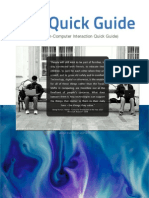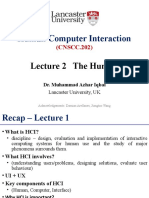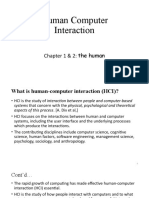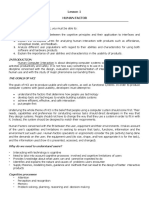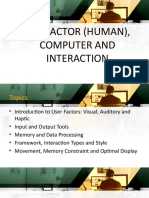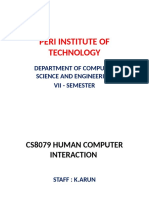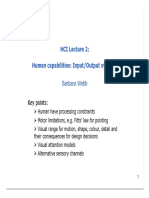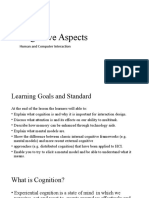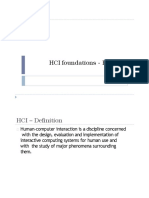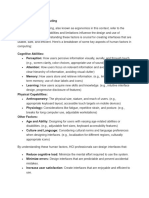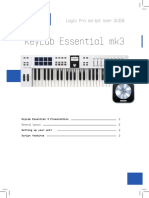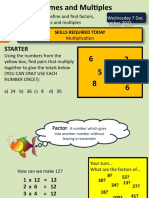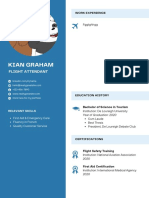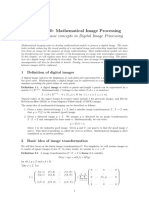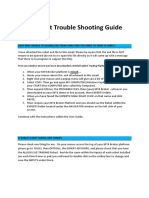0% found this document useful (0 votes)
10 views18 pagesLecture 4
The document discusses human capabilities in user interface design, focusing on the Human Processor Model, which helps predict task performance time. It covers key concepts such as perception, motor skills, attention, and errors, emphasizing their importance in designing effective user interfaces. Additionally, it highlights the role of color and techniques to draw user attention while addressing potential errors in user interactions.
Uploaded by
ayabahaaCopyright
© © All Rights Reserved
We take content rights seriously. If you suspect this is your content, claim it here.
Available Formats
Download as PDF, TXT or read online on Scribd
0% found this document useful (0 votes)
10 views18 pagesLecture 4
The document discusses human capabilities in user interface design, focusing on the Human Processor Model, which helps predict task performance time. It covers key concepts such as perception, motor skills, attention, and errors, emphasizing their importance in designing effective user interfaces. Additionally, it highlights the role of color and techniques to draw user attention while addressing potential errors in user interactions.
Uploaded by
ayabahaaCopyright
© © All Rights Reserved
We take content rights seriously. If you suspect this is your content, claim it here.
Available Formats
Download as PDF, TXT or read online on Scribd
/ 18

